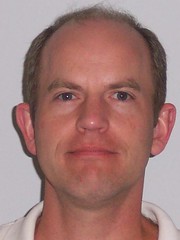Stion leaves Photovoltaic Patent Trail
 Even Stion needs patents.
Even Stion needs patents. Stion Corporation has crawled back into the news this last week with two press releases:
Stion Hires Product Development Expert Robert Wieting as VP of R&D
Stion Hires Thin-Film Expert Steven Aragon as VP of Engineering
along with Stion Bulks Up With New Hires for Production Scale Up and Stealthy Stion to Raise Another Round both from Greentech Media.
Thus far, Stion has disclosed little about their “next-generation solar photovoltaic company developing high-efficiency thin-film modules using proprietary materials and device structures.”
Stion’s patent applications provide the only insight available into their thin film structures, material sets, and manufacturing processes per:
USPTO Patent Application Publication Number US 20080092953
Method and structure for thin film photovoltaic materials using bulk semiconductor materials
These WIPO and USPTO patent applications seem like early iterations of the patent above:
(WO/2007/134322) METHOD AND STRUCTURE FOR THIN FILM PHOTOVOLTAIC MATERIALS USING SEMICONDUCTOR MATERIALS
USPTO Patent Application Publication Number US 20070264488
METHOD AND STRUCTURE FOR THIN FILM PHOTOVOLTAIC MATERIALS USING SEMICONDUCTOR MATERIALS
Per the Abstract in the latest Stion patent application:
A photovoltaic device and related methods. The device has a structured material positioned between an electron collecting electrode and a hole collecting electrode. An electron transporting/hole blocking material is positioned between the electron collecting electrode and the structured material. In a specific embodiment, negatively charged carriers generated by optical absorption by the structured material are preferentially separated into the electron transporting/hole blocking material. In a specific embodiment, the structured material has an optical absorption coefficient of at least 103 cm-1 for light comprised of wavelengths within the range of about 400 nm to about 700 nm.
With regard to the material set, the patent application tips Group IV materials and metal oxides using a nanostructure:
According to the present invention, techniques related to photovoltaic materials are provided. More particularly, the present invention provides a method and structure for manufacture of photovoltaic materials using a thin film process including Group IV materials (e.g., silicon, germanium, silicon-germanium alloys) and metal oxides, such as copper oxide and the like. Merely by way of example, the present method and structure have been implemented using a nanostructure configuration, but it would be recognized that the invention may have other configurations such as bulk materials and the like.
The Stion patent application is long, complex, and details a number of alternative material structures as shown in this Picasa slideshow:
Each alternate material structure describes different possible combinations of materials and nanostructures as well as the corresponding nanostructured material fabrication process. The patent further illustrates methods for forming nanostructured materials using solution phase deposition (SPD), electrochemical deposition (ECD), solution phase growth (SPG), and vapor phase deposition (VPD).
For example, the nanocomposite nanostructured material in Figure 1 above is:
comprised of, e.g., nanoparticles, quantum dots, quantum wires, nano-columns, nanorods, nanotubes, quantum wells, nanoshells, nanobelts, nanoporous materials. In a specific embodiment, the device includes a substrate member 101. The substrate member includes an overlying surface region. In a specific embodiment, the substrate member can be an insulator, a conductor, or a semiconductor, including any combination of these and the like. In a specific embodiment, the insulator can be a glass, quartz, plastic, ceramic, or other type of homogeneous and/or composite and/or layered material. In a specific embodiment, the conductor can be a metal, a metal alloy, or any combination of these, and the like. Alternatively, the substrate member can be a semiconductor material, such as silicon, silicon-germanium alloys, Group III/V, or Group II/VI materials, and the like. Of course, there can be other variations, modifications, and alternatives.
I have to wonder if the complexity and attempted all encompassing nature of this patent application will create litigation issues for Stion in the future. Would multiple patent applications based on the alternate material structures or fabrication processes have been a safer, modular approach?
Prior Stion news
Stion announced plans to relocate from Menlo Park to a San Jose location back in March 2008:
Solar startup Stion plans move to San Jose, remains stuck in stealth mode
Solar Company Stion to Relocate to South San Jose’s Industrial Park
Earlier speculation on Stion and quantum dots:
connecting the dots by Jennifer Ouellette at Cocktail Party Physics
Harnessing quantum dots for solar panels
Quantum-dot solar power
As the only photovoltaic investment of Khosla Ventures, Stion justifies further scrutiny. Vinod Khosla has panned photovoltaics as a non-scalable solution that won’t impact climate change! For example, please see “Solar photovoltaics under the gun”. I still remember Mr. Khosla bad mouthing photovoltaics during his keynote at Solar Power 2006.
Labels: Stion











3 Comments:
Nice post. It will be very interesting to see what the final product looks like and how it performs.
I've worked with these guys before. They don't have anything.
Stion could very well revolutionize the solar industry if their thin film technology works. I heard from someone close to the company that with the materials they are using, they could get double the efficiencies of silicon cells at less than half the cost
Post a Comment
<< Home